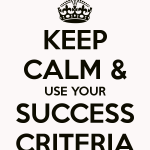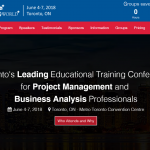My friend Lisa was telling me the other day about how she had to deliver a PowerPoint presentation, on her marketing strategy, to a group of sales executives. Her concern was how to keep them engaged, paying attention. The slides would contain some analytical data that could come across as a bit dry to this audience, which is notorious, in her company, for their short attention spans.
“How do I keep them engaged, away from their emails, keep them from texting?”
I had some advice for her, and shared that with her. She liked it. And then I thought, why don’t I just publish a quick-tip blog and share it with all of you? Maybe you have had similar situations and wondered what to do, too.
The Challenge: Maintain Audience Attention
I, myself, had the exact same challenge many years ago in advance of an important presentation to an executive team. I was very anxious. If my audience started to lose interest, or started texting or checking their emails, it could derail my objectives the way you can unravel a sweater by pulling on a thread.
That night, as I was developing my presentation, I was also listening to a classical radio station in the background. Suddenly, something that the announcer was saying caught my attention.
She mentioned that the upcoming piece, by Franz Liszt, was composed by him specifically because he was frustrated with the lack of attention being paid by his audience. I had to hear this.
How Franz Liszt Solved the Problem
Liszt was irritated that some of his audience would actually have conversations while the orchestra was playing some of the faster, louder movements.  At other times, during slow, melodic movements, some listeners would actually fall asleep and even begin snoring. All of this was distracting to the musicians, to the other members of the audience, and personally insulting to him, as a composer. At some point, good old Franz had had enough.
At other times, during slow, melodic movements, some listeners would actually fall asleep and even begin snoring. All of this was distracting to the musicians, to the other members of the audience, and personally insulting to him, as a composer. At some point, good old Franz had had enough.
So he did the following. He composed a piece that had a beautiful, quiet adagio to start with, and ended abruptly with an allegro fortissimo (very fast and very loud). And then, after some time, just as suddenly, reverted back to a quiet adagio. And so it went, back and forth, adagio to allegro fortissimo, to adagio, and back and forth over and over again a few times.
So what happened when the piece was played? After the first adagio, when the drums and horns suddenly let loose, all those asleep jumped out of their seats, very, very wide awake. After a while they began talking, being drowned out by the loud music. Just like I and my friends used to talk loudly in nightclubs, so these patrons tried to have themselves heard above the sound of the orchestra.
And then, just as suddenly, the music went very quiet – and they didn’t. Very, very, embarrassing, humiliating, publicly, in front of all their friends and acquaintances. Eventually, they dozed off again, only to be jarred wide awake the next time the horns and drums galloped in, full bore. After two or three cycles, everyone was paying attention to the music. No more talking, no more sleeping.
That gave me a great idea. Here’s what I did, and it worked very well for me. Dankeschőn Franz.
Lessons from Franz
Every three or four slides of my presentation I posed a question. Sometimes it was something I felt I already knew the answer to. For example, a particular stakeholder group was very important to the project and was highly impacted. So I asked: “Does this sound right to you? Do you agree…Steve?”
Suddenly Steve looked up from his cell phone, quickly processed what he was seeing, and provided his input. And we had a very constructive exchange. Then I asked Alice if she agreed. That also led to a good, quick, engaging discussion.
A few slides or so later, I did the same thing, on a different topic, with a couple of different audience members. Same type of positive exchange.
Then, some slides later, the same thing once more. By now, everyone was paying full attention. Wouldn’t you be too, if you felt the presenter would suddenly turn to you and ask you a question? Of course you would. I certainly would. I never want to be embarrassed being called out and having to admit I was not there, fully. It’s not considered professional.
Final Caveats
Of course, you have to be genuine in choosing the questions you ask in your presentation, and, that takes extra thought and preparation. I know I don’t have to tell you this, but you never want to come across as glib, like a school teacher scolding grade schoolers. These kinds of audiences can turn on you if they feel you’re playing games with them. What I am sharing here with you is a legitimate tactic to keep an audience’s attention, but you have to also respect your audience.
Anyway, I hope this works for you if you choose to use it. If you do, and you like it, you can thank me. If it doesn’t work for you, or you don’t end up liking it, blame Franz.
I hope you enjoyed this, and I look forward sharing more with you soon. Take care.
Like this blog? Share it with your colleagues. And sign up and you won’t miss another one!












